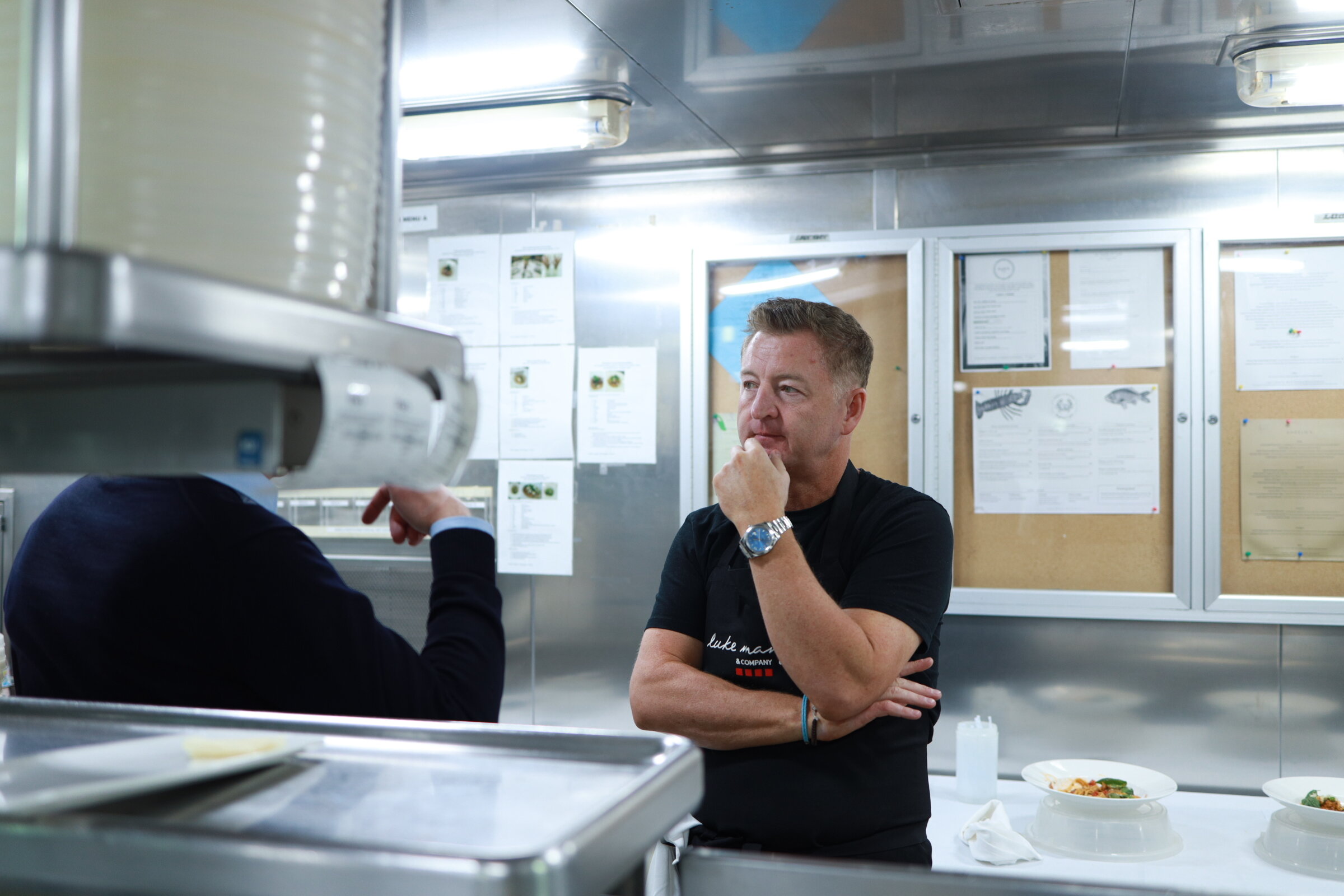What it's like running a restaurant at sea
4.7 min read
This year marks the 10th anniversary of my partnership with P&O Cruises and in that time we’ve had some remarkable achievements. Currently, I’ve got four restaurants across the fleet, with another two launching on board the Pacific Adventure, which embarks on its maiden voyage in October 2020.
As a diner, the experience of eating at these restaurants might feel the same as dining at one of my eateries on land, but behind the scenes there are many unique challenges and considerations that we need to work with to ensure that our food and service meet diners’ expectations.
One of the main things we are conscious of when developing the menus is that guests might be on board the ship for up to 18 days.
We want to give them as much flexibility and variety as possible so that they can keep coming back day after day and eat something different.
One of the ways we do this is by breaking down the menu into lots of different sections such as tapas, small bites, salads, the grill, desserts and an extensive selection of sides.
This way, diners can pick and choose from a lot of different elements to customise their meal.
Me menu testing in the kitchen on one of the P&O ships!
There are also some kitchen practicalities to consider when testing recipes for the ships and one of these is that we try to do all our measurements by teaspoons and tablespoons. In a normal restaurant, or even when we create recipes for Virgin Australia, we have to quantify our ingredients by the gram. When you’re on a ship that’s charging through the ocean, it’s tricky to get a consistent measure using scales because when you put them on a moving table, the numbers are always going to fluctuate. We also avoid using open flames, because as much as we’d love to create a bombe Alaska, or entertain our diners with a flambé at the table, it’s not the safest thing to do on a moving ship.
Quick snapshot before more guests board!
But I’m always ready for a selfie.
When it comes to sourcing ingredients and making sure the menu comes within cost, we work closely with P&O’s corporate executive chef, Uwe Stiefel. When we want to change something on the menu, he will advise us what produce we can work with, depending on what he has negotiated with farmers. Uwe then orders all the produce for us and it is delivered to the port where the ship is docked. P&O has a strict timeline for loading goods on board, which can sometimes be a challenge. Suppliers need to be at the port very early on the morning of departure and all produce needs to be loaded on board by midday. So if your supplier is late, then the ship’s crew can’t accept the produce because they need to make sure everything is stored away safely and that the ship is ready to depart on time.
Matty getting into it and ensuring consistency throughout all of our menus!
Since I can’t be on the ship all the time, we create a plating guide to make all the crew aware of how I expect the food to be presented, which includes an image of the final dish, all the ingredients, specifications and allergy information. It also provides the front-of-house team with a detailed understanding of the dish so that they have extra talking points when serving our customers.
Over the past 10 years, we’ve served more than one million meals in my restaurants on board the P&O fleet and I’ve loved the journey of creating dining concepts that contribute to a memorable holiday experience. I’m proud to be extending my partnership with P&O by another five years and excited to see what else we can accomplish together as we work towards the 15-year milestone.
And no, this bicycle at Luke’s on P&O does not move.








